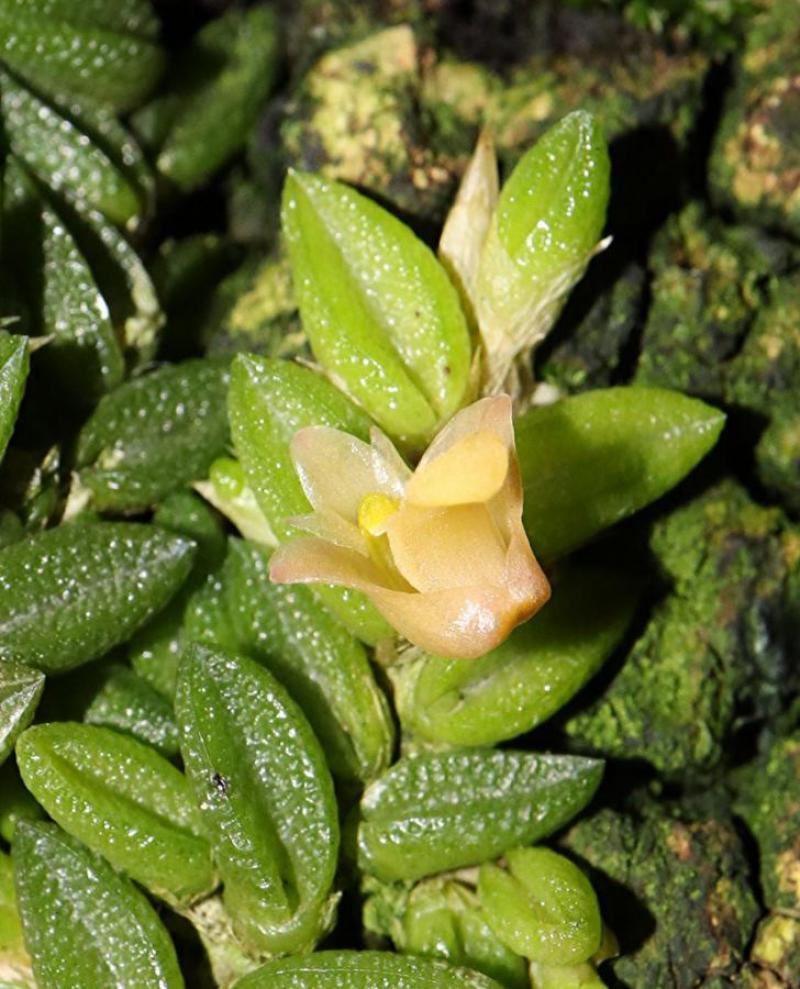Dendrobium toressae
Also known as: The Torres Strait Dendrobium or The Sparkle Orchid The Mica Orchid in the subfamily: Epidendroideae
General Information
The Torres Strait Dendrobium is a miniature sympodial warm to hot growing epiphytic or lithophytic orchid belonging to the sub family Epidendroideae. It is named after a channel between New Guinea and Australia.
Plant Description
Sympodial. Grows to 5cm. Each new growth has numerous leaves that grow to 0.4-0.8cm long. The plant tends to climb or sprawl with each new growth
Care Notes
These orchids have a fine root system that can quickly die back if left dry for too long, but also does not like to be kept wet, so water regularly but ensure that the mix is dry before watering.
Climate
These orchids grow in cool climates, at low altitudes, in cool plains, forests or coastal scrub.
They are forgiving of humidity variances as long as temperatures are kept on the cool side. They can do well outdoors in the garden in cool and temperate areas, though it is important that they are protected from warm dry winds. They can enjoy morning sun especially in winter but will need protection from the hot sun in the afternoon and during summer. With some acclimatisation they may be able to receive more sun.
Grows at low to high elevations. Rainfall ranges from 41mm to 460mm per day, heaviest in September and lightest in January. Humidity ranges from 65% to 74%, highest in September and lowest in March. Temperature ranges from 11C to 27C, highest in June (18C to 27C) and lowest in January (11C to 20C).
Watering
These orchids are sensitive to excessive watering and should only be watered when they look thirsty. Water infrequently and ensure that the roots are dry before watering. Keep an eye on them especially during hot weather as overwatering can lead to rot, whereas underwatering may result in wilting or shriveling, which while unattractive, will not kill the plant.
Keep moisture levels up during hot weather as the plant is prone to dehydrationFertiliser
Apply liquid based fertiliser per recommended directions. They can benefit from a high phosphate fertiliser leading up to flowering season, followed by a high nitrogen fertiliser when new growth appears, and a balanced fertiliser in other times. These orchids can also tolerate slow release fertiliser applied 1-2 pellets per cup (250ml) of media.
Apply fertiliser regularly at half strength year round. Use a high Nitrogen fertiliser during Spring and Summer. Use a high Phosphorous fertiliser during Summer.Potting
Due to the growth nature of these plants they are best mounted onto cork, tree fern slabs, or even trees if the climate suits. Water regularly especially in hot weather.
This plant does well mounted to Cork slabs.


